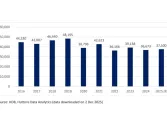
AXA’s 9M’23 revenue inches up 2%
It accumulated EU78.8b in gross written premiums and other revenues.
AXA’s gross written premiums and other revenues increased by 2% to EU78.8b, with significant contributions from different segments.
Property & Casualty (P&C) saw a 7% growth, driven by a 9% increase in Commercial lines due to favourable price effects and higher volumes, particularly in Europe and AXA XL Insurance.
Personal lines also contributed with a 5% growth, fueled by favourable price effects in Motor, although offset by a 3% reduction in Natural Catastrophe exposure at AXA XL Reinsurance.
Life & Health (L&H) experienced a 2% decrease in premiums, with stable premiums in Life. Protection and group/individual (G/A) Savings products saw growth of 3% and 5%, respectively, reflecting higher sales of G/A capital-light products.
ALSO READ: AXA XL appoints new head of art and expertise for APAC, Europe
However, sales of Unit-Linked products decreased by 13%, and premiums in Health dropped by 7%, primarily due to the non-renewal of two large legacy international group contracts.
Asset Management revenue decreased by 2%, mainly due to lower management fees resulting from a reduced average asset base due to unfavourable market conditions.
The Solvency II ratio as of 30 September 2023, stood at 230%, a 5-point decrease compared to 30 June 2023.
The decline was primarily attributed to the early redemption of subordinated debt (-4 points) and unfavourable impacts from financial markets (-3 points), primarily driven by lower equity markets and higher implied volatility.
This was partially offset by a strong operating return (+7 points), net of accrued dividend for 3Q23 (-4 points).
Outlook
The group maintains a positive outlook and affirms its commitment to achieving its 2023 underlying earnings target of above EU7.5b for the year.
However, it anticipates certain challenges, including higher health claims frequency in the UK, continued elevated lapses in Italy, and natural catastrophe activity in the third quarter.
Management does not foresee the need for additional debt issuances for the remainder of the year, considering the strong capital position of the group and current market conditions.
As a result, total debt at year-end is expected to remain broadly stable compared to the previous year.



















 Advertise
Advertise






